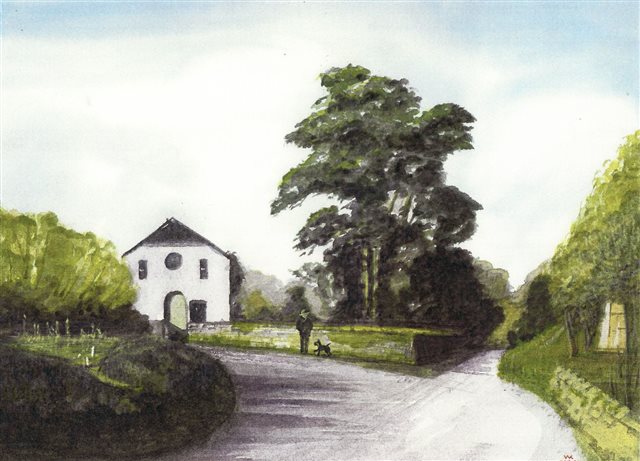
This Grade II listed building is of the early 19th century, standing where the lane (known in the past as Baker’s Lane) from Pelham Hall meets the road running through Pentwyn from Croes Faen, and down past Glyn Farm to the river Wye. Information had long been lacking about its origins until a deed of sale of the ground on which it stands came to hand in the mid-1990’s when the chapel was sold by the Baptist Church authorities.
It was already known that in the early 19th century, Baptists in the area were gaining support which resulted, among other things, in the building of the Baptist church in Monmouth in 1818 and the growth of village groups allied to the cause. Eight years earlier in Penallt, effect was given to the Enclosure Act of 1810 by a series of “awards,” including that of “Lot 371” – which includes the corner site on which the Baptist chapel stands – to a Paul Davies (Yeoman). He is later described in the 1824 deed of sale of part of the site, as having purchased it “from the Commissioners appointed by virtue of the Act (of 1810) for including the said Common” (that is, “part of the waste of Trellech common” in the Manor of Trellech, of which Penallt was a part.)
Paul Davis (the two spellings are interchangeable even in the same document) is named in the 1824 deed as selling for two pounds an area measuring 11 square perches (333 sq. yards) in the south east corner of the site. (Lot 371 bought by Paul Davis in or about 1810 measured just under one acre.) The buyer was a Trust newly formed to oversee “a meeting-house lately erected” for worship by “a Society of Protestant Dissenters known also as Particular or Calvinistic Baptists.” The earliest gravestone is dated 1822; presumably the building was completed by then, dating the chapel to about 1820. (The date of 1858 given in the Miscellany is a figment of imagination.) A date of 1820 is consistent with not only its architectural style but with an appeal leaflet found by Mrs. Lilian Boycott (a one-time worshipper) which referred to the chapel as having stood for nearly 150 years. The leaflet is believed to have been printed in the mid-1960’s.
The Monmouth Baptists were at that time part of a movement with adherents in the Forest of Dean and in Herefordshire. The deed of sale illustrates the wide area from which the Trustees were drawn – which itself is remarkable given the difficulties of communication in the early 19th century. The Trust members were “John Charles (shoemaker), Richard Williams (breeches maker) and James Everson (shoemaker) all of Monmouth; Thomas Wright (Dissenting Minister) of Lidbrook; John Fry (Dissenting Minister), Peter Teague (coal merchant) and John Box (blacksmith) of Lidney; John Evan (baker) of Hereford; Richard Gill (worsted(?) maker) and Samuel Phillips (stone cutter) of Penallt.”
CADW describes the building as “a rural chapel retaining much character,” being built of local rubble with dressed stone quoins and a half-hipped roof. It is bounded by a public footpath on the west, its (disused) burial ground to the east and an open field (Paul Davis’s Lot 371) to the north.
It remains as attractive a reminder of past cooperative endeavour as one could wish to find in a prominent and entirely “right” position in the village. Conversion to secular use presents problems but it is difficult to believe that acceptable solutions cannot ultimately be found, given the successful conversion of other church buildings in the village.
[from: Penallt Revisited]